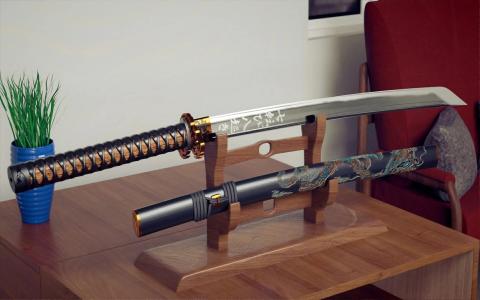So, I got this idea stuck in my head a while back – what does a real sword actually set you back? Not the plastic toys, you know, but a proper, pointy, metal thing. I figured, hey, how hard can it be to find out? Well, let me tell you, it was a bit of a journey.
My First Confusing Dive Online
My first stop was, of course, the internet. I typed in something like “real sword prices” and boy, was that an eye-opener. The numbers were all over the place! I saw stuff listed for under a hundred bucks, and then others that were thousands, even tens of thousands. It made no sense to me at first. I was thinking, a sword’s a sword, right? How can the prices be so wildly different?
Starting to See the Differences
I started digging a bit more, trying to understand what was going on. It didn’t take long to realize that “real sword” is a pretty broad term. There are worlds of difference between what various people call a “real sword.”
It began to click that there are a few main buckets these things fall into. It’s not just about whether it’s made of metal. Far from it.
What Actually Makes Them Cost More?
I spent a good few evenings just browsing forums, watching videos of blacksmiths, and reading articles. It turns out a whole bunch of things affect the price. Here’s what I gathered:
- Is it just for show? A lot of swords out there are basically just sword-shaped objects. They call them “wallhangers” or decorative pieces. They look cool from a distance, but you wouldn’t want to swing them around too much. They’re often made from stainless steel, which isn’t ideal for a functional blade, and the tang (the part of the blade that goes into the handle) might be weak. These are, obviously, on the cheaper end.
- Can you actually use it? Then you get into what they call “functional” or “battle-ready” swords. Now, even this term gets thrown around a lot. These are usually made from carbon steel, properly heat-treated, and built to withstand actual use, like cutting practice or sparring (with proper safety gear, of course!). The construction is way more robust.
- Who made it, and how? This is a big one. A sword punched out by a machine in a factory is going to cost a lot less than something hand-forged by a skilled smith. The amount of time, skill, and artistry that goes into a hand-made piece is incredible. I watched some videos, and it’s painstaking work.
- The materials themselves: Beyond just “carbon steel,” there are different types. And then there’s the stuff used for the handle, the guard, the pommel. Exotic woods, leather, custom fittings – it all adds up.
- Historical accuracy or custom work: If you want a replica of a specific historical sword, or something custom-designed, you’re looking at a higher price tag. Research and unique craftsmanship cost money.
So, What Did I Find Out About the Actual Numbers?
After all that poking around, I started to get a rough idea of price ranges. This is just my observation, mind you, from what I saw out there:
- Decorative stuff / Wallhangers: You can find these for, say, $50 to $200. Sometimes a bit more if they’re fancier. But again, these are mostly for looking at.
- Basic Functional / Practice Swords: For something you can actually use for backyard cutting or basic forms, you’re probably starting around $200 to $500. These are often factory-made but from reputable brands that focus on durability.
- Mid-Range Functional Swords: This is where things get more interesting. For $500 to maybe $1500, you can find some really solid, well-made swords. Better steel, better construction, maybe some nicer finishing or historical accuracy. These often come from smaller forges or well-regarded production companies.
- High-End / Custom / Artisan Pieces: Now we’re talking. If you’re looking at swords from well-known individual smiths, custom orders, or pieces that are basically functional art, the sky’s the limit. I saw prices starting from $1,500 and going way, way up – easily into many thousands, sometimes tens of thousands for true masterpieces by famous smiths or antiques.
A Little Story About My “Almost” Purchase
I remember early on, I saw this super cool looking katana online for like, $150. “Battle Ready!” it screamed in the description. I was this close to buying it. Then I started reading reviews for that specific seller and similar cheap swords. Stories of handles flying off, blades bending on hitting a water bottle… yikes. That was a bit of a wake-up call for me. Made me realize that if something sounds too good to be true, especially with swords, it probably is. It pushed me to learn what actually makes a sword good, not just cheap.
My Two Cents on the Whole Thing
So yeah, figuring out sword costs isn’t like checking the price of milk. It really, really depends on what you’re after. If you just want something cool for your wall, you don’t need to spend a fortune. But if you’re thinking about any kind of actual use, even light practice, you need to be prepared to invest a bit more for safety and durability.
My biggest takeaway? Do your homework. Seriously. Don’t just jump at the first shiny thing you see. Understand what you’re buying, who you’re buying it from, and what it’s actually made for. It was a fun little research project for me, and I definitely look at swords differently now.
